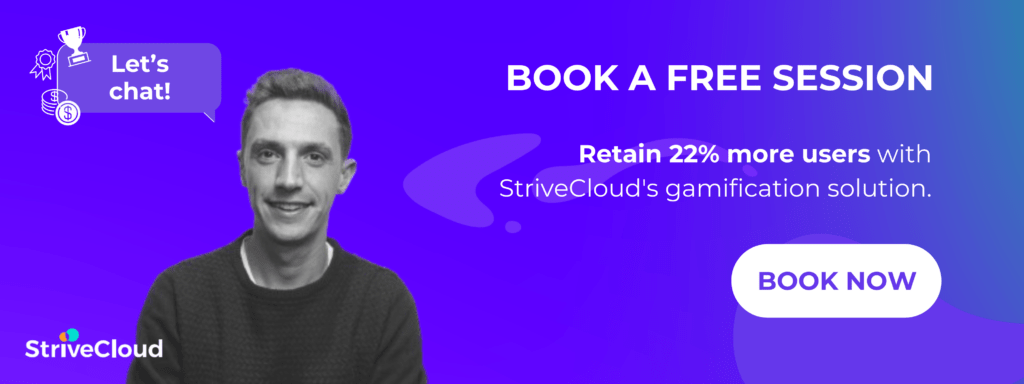The top 13 health & fitness apps of 2023 all have one thing
Discover the power of game mechanics to motivate healthy behaviors and learn how top apps are using gamification features. From in-app communities to badges, we’ve gathered 13 gamification examples from the leading industry apps that can help you boost your growth in 2023.
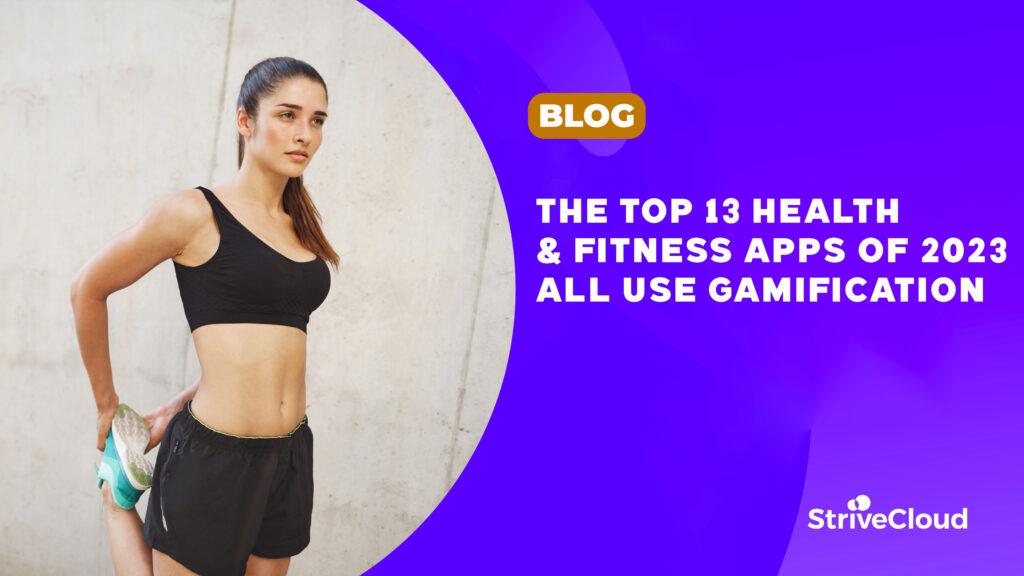
- How 2022 changed the health & fitness market
- #Fitbit uses social connection to motivate users to run harder
- #MyFitnessPal is a master of motivation
- #Calm uses personalized gamification features to reduce churn
- #Weight Watchers incentivizes users to meet their goals with rewards
- #Headspace uses badges and streaks to boost user’s self-esteem
- #Replika has a personalized AI to align with the user
- #Lose it! challenges users to lose weight
- #Yoga-Go is centered on customer value
- #Peleton boosts its user retention with its community
- #Plan a personalized workout program with Muscle Booster
- #Immerse in a gamified story with Zombies, Run!
- #Mango Health helps users have a healthier lifestyle
- #SuperBetter focuses on creating healthy habits for its users
- What we can learn from these gamification features
- TLDR
How 2022 changed the health & fitness market
In 2022 the exercise and weight loss segment held the largest revenue share of over 54.6%
As 2023 has begun, the mHealth balance sheet looks healthier than ever. In what is a huge milestone, the market size of the sector is anticipated to expand to USD 293.2 billion in 2030. Growing awareness among adults to use mobile health solutions and supportive government incentives for using digital healthcare is the cause of an exciting growth period affecting the whole industry, from meditation platforms to sports & diet trackers, and even instructional exercise apps.

The unprecedented competition coincides with the consolidation of the market, and this has created a difficult environment to thrive in. While many apps do their best to vie for attention, the top apps rake in the cash. For context, Fitbit, the #1 top-grossing app in health & fitness, makes $3 million a month in the US alone.
Certainly, it is enviable that these apps bring about healthier lifestyles for their users and make money doing it. To get the job done, and lead the market, the world’s top health & fitness apps utilize gamification. Put simply, these apps all implement a range of gamification features designed to motivate users & elevate user engagement strategies!
Let’s run down the top 13 grossing health & fitness apps and see how they gamify:
Fitbit is a health & fitness app used with a wearable wrist device. The app tracks your daily steps, which buy your way up the leaderboard. Leaderboards are one of the most effective gamification examples because it creates a magnetic sense of social connection. Users find enjoyment and fulfillment when they can compete (or collaborate) with friends!
What’s more, they can then share the results on social media, which we call a positive intensifier. It works, as Fitbit over 47 trillion steps in 2022. Studies show that the leaderboard alone leads to a 15% increase in daily steps!

#2 MyFitnessPal is a master of motivation
Calorie counter MyFitnessPal has 200 million users, and it does so because the app is a master of motivation. On MyFitnessPal, users can set a goal for their calorie intake, and this target defines the graphs and visualizations they see. As a result, their graphs and progress trackers are personalized to their custom goals.
Gamification examples like goal-setting have the power to transform your user’s quest! Studies show that personalized tools are more effective at helping users achieve goals.

#3 Calm uses personalized gamification features to reduce churn
How did the wellness app Calm achieve a 3x boost in user retention? Simple – by letting users set their push notifications to remind them to meditate.
With Calm’s Daily Reminder feature, users receive a motivating message at a time of their choosing. By personalizing push notifications, Calm not only avoids frustrating new users with clutter but also helps facilitate habit formation.

#4 Weight Watchers incentivizes users to meet their goals with rewards
The Weight Watchers app combines all weight loss tools in one. It is one of the best sports & diet trackers on the market. Users can track anything from diet, water intake, and sleep all the way up to physical exercise. The app even allows you to scan your favorite foods to effortlessly track nutrients. Besides tracking users can take guided coaching sessions & mindset training.
When users on the WW app hit their goals, they get a ‘Win’. This is positive reinforcement at its most clear! Moreover, wins rack up points that elevate your standing in a tiered rewards system. With it, users are motivated to win to earn feel-good items such as gym memberships or free body products.
This reward system takes advantage of the mechanics behind many gamification examples. Namely, constraint and accomplishment. In short, constraint means that users crave things that are locked off from them. By hiding increasingly more generous prizes behind tiers, users are motivated to keep going! In turn, this provides accomplishment and the happy feelings that come with it. It’s a positive feedback loop!

#5 Headspace uses badges and streaks to boost user self-esteem
Headspace is an incredibly successful meditation app, and one of the best habit-forming apps. Fostering habitual visits is essential for creating an active user base. Certainly, these app’s gamification features facilitate users to keep up their routine:
- Celebrating early achievements with prizes results in the ‘endowed progress effect’, which says that users rewarded early are more motivated to achieve.
- Badges are not shared. Since the app is all about mental health, it chooses to avoid any social comparison between users that can dampen self-esteem.
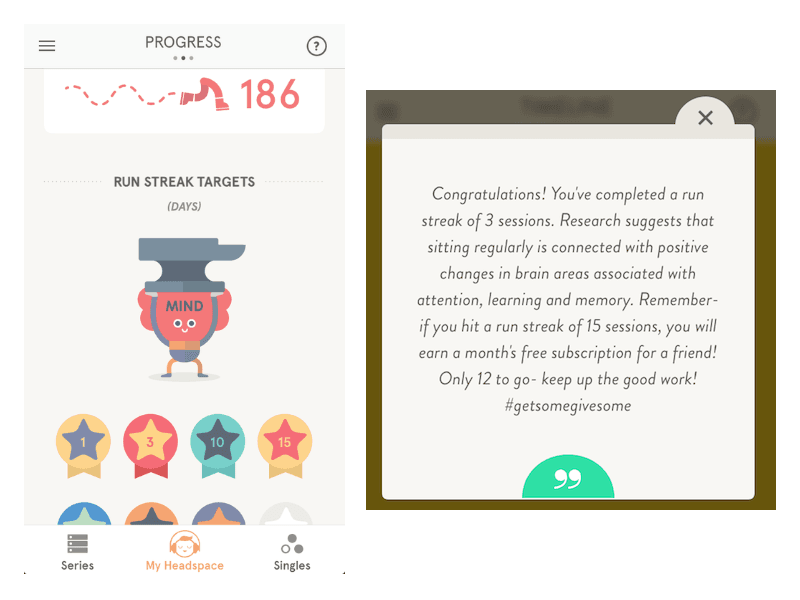
#6 Replika has a smart, personalized AI made to align with the user
You may not have heard of the wellness app Replika, but it is highly successful. Currently, the app boasts 10 million registered users. These users, mostly between the ages of 16-24, come to Replika for conversations with an AI-powered chatbot that acts as a virtual friend or a mentor. Amazingly, 85% of Replika users feel better after conversing with the AI.
What makes Replika’s AI so special is that it is meticulously personalized to the user. The more the user chats with the AI, the more the chatbot will develop a compatible personality. How cool is that! The approach is backed up by research studies that show how customizable tools enhance user autonomy – for example by molding a personal AI chatbot – & increase intentions to engage.

#7 Lose It! challenges users to lose weight
Lose It! uses the proven principles of calorie tracking to educate and help you succeed. To get started just input your profile details with your goal weight and they will calculate the ideal daily calorie budget best for you. Next, easily track your food, weight, and activity and get ready to celebrate your weight-loss victories. There’s no easier way to change your habits and learn about your nutrition needs.
Of all the gamification features, challenges are some of the most fun. This is especially important for tracking apps, where their very point requires lots of repetitive tasks. By including a competitive and exciting element, users are more likely to complete them!

#8 Yoga-Go is centered on customer value
From their user-centric interface to a simple and personalized onboarding, Yoga-Go is quick and easy to get into. For one, these features make users more motivated to return to the app regularly. But right from the beginning, it means that users are less likely to become frustrated and churn early. Why? Because the user value is clear! This approach made Yoga-Go hugely successful, generating $2 million every month.

#9 Peloton boosts its user retention with its community
Of all the fitness apps, Peloton is perhaps the one with the tightest community. The benefits of an in-app fitness community are clear, making 60% customers likely to become loyal to the brand. Forbes notes that Peloton’s social integration runs deep, and it’s because of the gamification, whether it’s introducing social elements or a fitness app challenge. Users can show off shared badges earned in team fit challenges, and even brag about hitting the top place on a live class leaderboard!

#10 Plan a personalized workout program with Muscle Booster
Muscle Booster has over 1000 workouts available of between 30 and 60 minutes. You can simply choose the area you want to work out & get a personalized workout plan.
The first thing you want when new users install your app is to immediately see the potential benefits. By asking users what areas of the body they want to optimize, Muscle Booster gives the user autonomy. This is crucial for mHealth apps because health is intrinsically personal. As such, when you implement personalized features, you give customers ownership over the user experience – making them more likely to stay.

#11 Immerse in a gamified story with Zombies, Run!
Zombies, Run! is an app that turns running into a fun game about being chased by zombies. With various game plots, the user can benefit from GPS tracking, distance, pace and time recording, calories burnt, and other customizable preferences. The app also provides virtual competition with other users making each mission even more exciting. Whether the user loves horror stories or simply needs the motivation to run, Zombies, Run! certainly makes use of an original gamified experience.
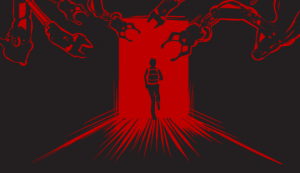
#12 Mango Health helps users have a healthier lifestyle
Mango Health inspires patients that take daily meds to live a healthier lifestyle by making it easy, fun, and rewarding. This app sends custom reminders to take your medicine, drink water, record your mood, check your blood pressure or watch your weight. As they stay on schedule, patients earn points that unlock the chance to win higher rewards such as $5-10 gift cards, money donations to charity organizations, and more. The best part? It’s free!
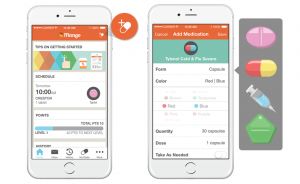
#13 SuperBetter focuses on creating healthy habits for its users
SuperBetter borrows game elements to improve mental health and social-emotional learning, and it differentiates itself from other apps by supporting the change of habits and behaviors. Researchers at the University of Pennsylvania concluded that “SuperBetter helped reduce depression in a controlled trial”.
How does it work? In a game design, the users can select from a list of options the obstacles that they want to overcome: depression, anxiety, chronic pain, etc. These obstacles become the “Bad Guys” that the users must defeat by winning the battles with the help of Quests and Power-Ups, such as calling a friend or smiling at a stranger. Unlike other gamified apps, SuperBetter’s goal is engaging communities in a friendly way, without leaderboards and competition.
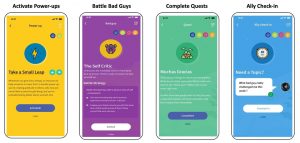
What we can learn from these gamification examples
It is clear by now that the best mHealth apps understand human motivation. By leveraging gamification features like points and levels, these apps become motivating to use leading to 35% of users seeing better outcomes in their health goals.
Build an experience that guides your users on their health journey while achieving your goals! Find out how gamification can help!
To be sure, the mHealth industry is banking on the benefits of gamification. As a result, the gamification industry is set to register a stunning compound annual growth rate of 22.3% over the forecast period 2023-2030. With this in mind, does your app take advantage of gamification mechanics?
- Relationships. Make your app feel more real and necessary.
- Accomplishment. Users crave personal growth!
- Empowerment. Today’s consumers expect autonomy and personalization.
- Unpredictability. Gamification keeps your app lively, which reduces churn.
- Constraint. Incentivize retention by locking benefits for your most loyal users.
- Sense of belonging. Users benefit from the value of community building.
- Storytelling. Engage your users in an unforgettable unique story.
In short, is your app made to motivate? Are you confident that your app features these powerful mechanics? To thrive in 2023, you need to use every tool at your disposal.
TLDR
- Health & fitness is growing fast, the market size of the sector is anticipated to expand to USD 293.2 billion in 2030 How are all the top mHealth apps motivating users in a saturating market? With gamification features like badges and leaderboards.
- Fitbit’s leaderboard leads to a 15% increase in daily steps.
- MyFitnessPal’s personalization tools make users more likely to achieve goals.
- Calm achieved a 3x boost to retention with a simple ‘Daily Reminder’ feature.
- WW’s tiered loyalty system rewards accomplishment with prizes and freebies.
- Headspace celebrates early achievements – see the ‘endowed progress effect’.
- 10 million Replika users are more likely to engage thanks to personalized AI.
- Lose It! challenges bring users together with a common goal.
- Yoga-Go has a simple, user-centric interface that lowers barriers.
- Peloton’s social features create a self-motivating loyal community.
- Personalized workout features let Muscle Booster users work on their goals.
- Zombies, Run! uses unique storytelling to immerse the user into a running experience.
- Taking medication becomes fun and financially advantageous with Mango Health.
- Super Better transforms mental obstacles into the “bad guys” that the user must defeat.


